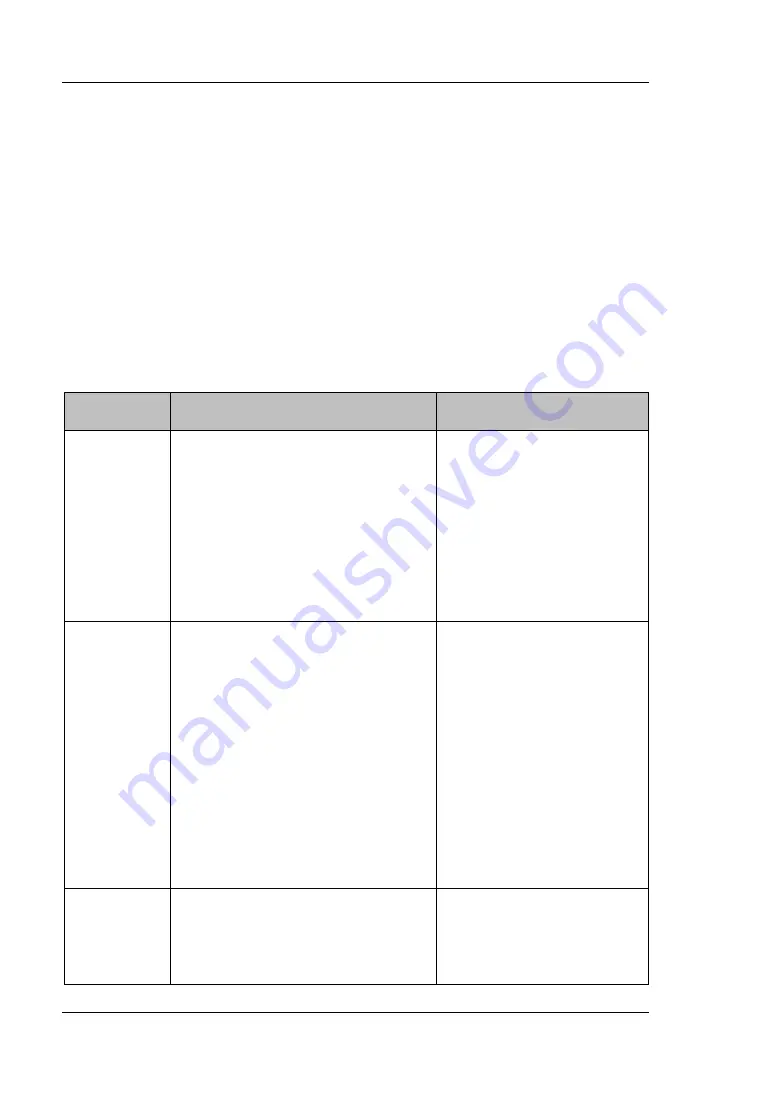
RIGOL
Chapter 5 Functions of the Front Panel of VSA
5-10 RSA3000E User Guide
Sweep and Function Settings
BW
FFT Window
Sets the type of the FFT window function.
The following 4 window functions are available: Rectangular, Hanning, Gaussian, and
Flat Top.
You can select a proper filter type by referring to the following table according to the
actual measurement requirements.
Window
Function
Characteristics
Application
Rectangular Its main lobe is relatively
concentrated, but its side lobe is
relatively high, with negative side
lobes. This will result in
high-frequency interference and
leakage during transform, even
worse, the negative spectrum. The
frequency recognition accuracy is
the highest, and the amplitude
recognition accuracy is the lowest.
If you have a high
requirement on the accuracy
of the frequency readout of
the main lobe, without
needing to consider the
accuracy of the amplitude,
then the rectangular
window is recommended.
Hanning
It is also called the cosine window.
Its main lobe is widened and
lowered, and its side lobe is reduced
significantly. In terms of leakage
reduction, the Hanning window is
superior to the Rectangular window.
However, the wide main lobe of the
Hanning window signifies the
widened analysis bandwidth and
reduced frequency resolution.
Compared with the Rectangular
window, the leakage and fluctuation
of the Hanning window are reduced,
with more choices.
The Hanning window is
preferred under the
following conditions: the
signal under test has several
frequency components; the
spectrum is very complex;
the test aim focuses more
on the frequency point
rather than the energy size;
the signal under test is
random or unknown.
Gaussian
It is an exponential window. Its
main lobe is wide and frequency
resolution is low. It has no negative
side lobe, and the attenuation of its
first side lobe reaches -55dB. It is
For the time-varying
exponential decay function,
you can use the exponential
window to improve the S/N
ratio.
















































